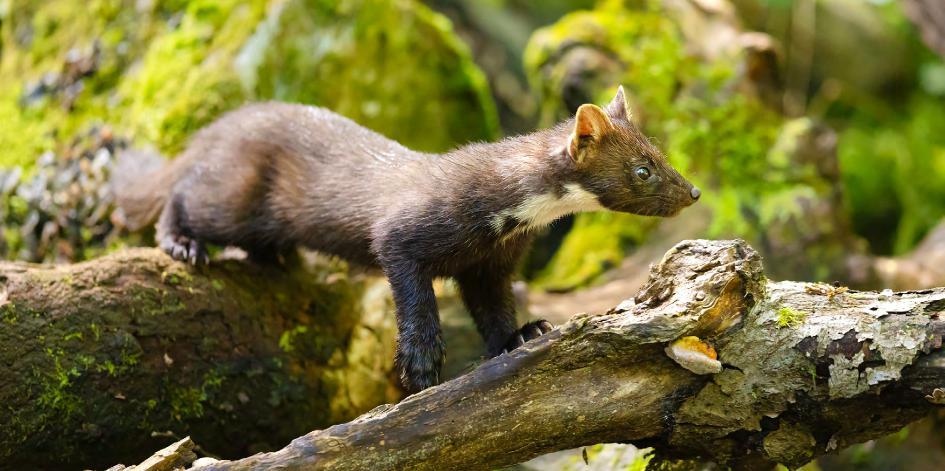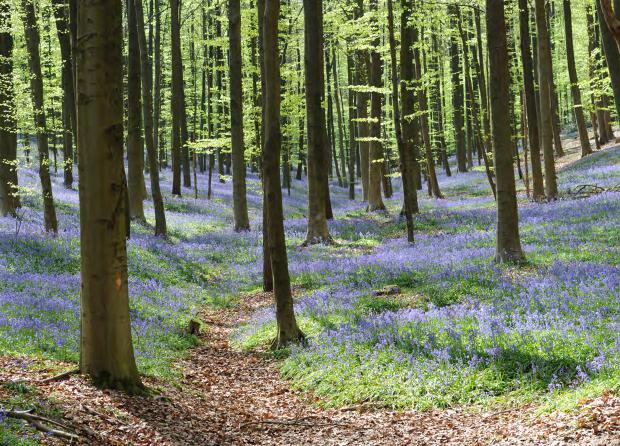
4 minute read
“THE INCREASING AWARENESS MAKES ME OPTIMISTIC ABOUT THE FUTURE”
You will read it several times in this e-book: the nature in Flanders offers a great variety. Nevertheless, one common thread runs through all these different landscapes. This is the so-called “Sandford Principle” - named after Lord Sandford, who introduced it in 1972 during a debate on environmental policy in the British Upper House. In short, it means that nature always takes precedence over economic activities such as tourism.
This “nature first” policy is particularly evident in forest management in Flanders. Indeed, important nature and forested areas cover the relatively limited surface area of Flanders, which possess a unique biodiversity: the Sonian Forest, the Meerdaalwoud Forest and the Hallerbos Forest (also see page 26). These ancient Flemish forests have great heritage value and there are countless historical stories that can be told about them. For example, the Sonian Forest has links with the House of Habsburg, with the defeat of Napoleon at Waterloo and with King William I of the United Netherlands.
An Urban Forest As A Unesco World Heritage Site
A leading expert of forest management in Flanders - and of fascinating stories about the topic - is Patrick Huvenne. As regional manager for the “Agentschap voor Natuur & Bos” (Agency for Nature & Forest) of the Flemish Government, he is responsible for a number of large forests to the south of Brussels and Leuven.
“With nature and forest management, there is always tension between the ecological function of a nature area and its recreational and production function. For example, the Sonian Forest and the Meerdaalwoud Forest are urban forests, which provide wood as well as relaxation and space for the people of Brussels and Leuven. Forest management is thus always looking for a balance between these functions. Sometimes a piece of forest has to be cut down, but the “Nature First” principle takes precedence. We also invest a lot in direct enhancement of nature. So we are creating new ecoducts that animals can use to safely cross over busy roads. And we are trying to steer recreation: the core of the UNESCO zone in the Sonian Forest, where nature is most vulnerable, is now less accessible to visitors by removing parking lots."
The UNESCO zone, indeed. The Sonian Forest has partially been recognised as a UNESCO World Heritage Site since 2017. It is part of the Ancient and prehistoric beech forests of the Carpathians and other regions of Europe, a serial world heritage site that includes special beech forests in various European countries. Patrick Huvenne:
“The Sonian Forest is the only domain in our country that has received the recognition as natural World Heritage Site. This indicates its value and unique importance. We play a part at the top level, with a rich variety of rare species and populations. This biodiversity underground is also large - just think of fungi and mushrooms or insects.”
The Importance Of Networks And Participation
Climate change and the destruction of biotopes by construction and agriculture are putting a strain on biodiversity. According to Patrick Huvenne, this threatens to change the image of the forest.
“According to some studies, the loss of life forms is even a greater crisis than climate change. In any event, we are looking for solutions at all levels and for a good approach to the challenges that are coming our way. To this end, we maintain close contact with both local stakeholders and fellow experts from all over Europe. Thanks to the UNESCO recognition of the Sonian Forest and the international tourism in, for example, the
Hallerbos Forest, we also play a role in European projects. And through the Institute for Nature and Forest Research (INBO), we monitor developments at European level via research programmes.”

Networks and participation are two central concepts in Flemish forest management, says Patrick Huvenne.
“Flanders is a densely populated area and the landscape is used intensively. Consultation with all users of the nature and forest areas is therefore very important. We do this in order to create greater support and to explain why we sometimes choose a certain manner of forest management. It is not always easy to manage the tensions between all these groups, but consultation is crucial.”
Optimism About The Future
Establishing partnerships and collaborations can be of interest worldwide, especially in countries where nature has to make way for human activities.
“An important part of my time and effort goes on connecting people with each other and with nature. This is why, almost 20 years ago, we set up the "Plan Boommarter", a local nature management project around the Hallerbos Forest. The plan focuses on connecting natural habitats and creating ecological corridors through forest expansion, hedgerows and wooded borders. In this way, together we create a favourable habitat for the pine marten, a protected species that is sensitive to habitat fragmentation. The plan also aims to make people aware of the landscape in which they live and to give them an insight into its nature value. We are now trying to repeat that same idea, but bigger and better, on a landscape scale: the idea of interconnecting the Brabant Woods, while giving residents, farmers and businesses a sustainable future, in connection with the nature around them.
Despite all the challenges ahead, I am optimistic about the future. Among other things, thanks to the increasing awareness and joint action. By working together, we can make a difference.
I increasingly see strong human networks of involvement. I certainly noticed it during the process around the Brabantse Wouden. We were able to see how many people of all kinds want to get behind this idea: business leaders, district committees, municipal authorities, documentary makers, writers and hospital boards approached us spontaneously with the question of how they can contribute to this recognition. I am confident that they will also make valuable contributions in the years to come. For me, in this, there lies the hope of a turn that preserves our natural resources. Riches that residents, businesses, visitors and tourists can continue to enjoy.”
Networks. Participation. Support. Involvement.
The values that Patrick Huvenne emphasises in this interview are also very important for a successful conference. In the same way as scientists, business leaders, governments and local residents gather behind a nature project, they also help to support your conference in Flanders. On the next page you can read more about this very strong support.










